Tea
Contents
Before explanation, know this after water Tea is the most widely consumed drink in the world. so let’s start with a cup of tea – tea: past, cultivation, types, benefits, and more.
Tea is an aromatic beverage commonly prepared by pouring hot or boiling water over cured or fresh leaves of camellia Sinensis.
Tea has a stimulating effect on humans primarily due to its caffeine content.
There are many different types of tea like Darjeeling, and Chinese green, have a cooling slightly bitter, and some tea has distinct flavor like a sweet, nut, floral, grass, that why tea has become the number 1 drink in the world after water
Tea (चाय)
Tea is made from the leaves of the camellia Sinensis plant. it is an evergreen plant that grows mainly in tropical and subtropical climates.
It has been used for medical purposes for decades. and tea plants true religion in southwest China, Tibet, Northeast India, and Myanmar.
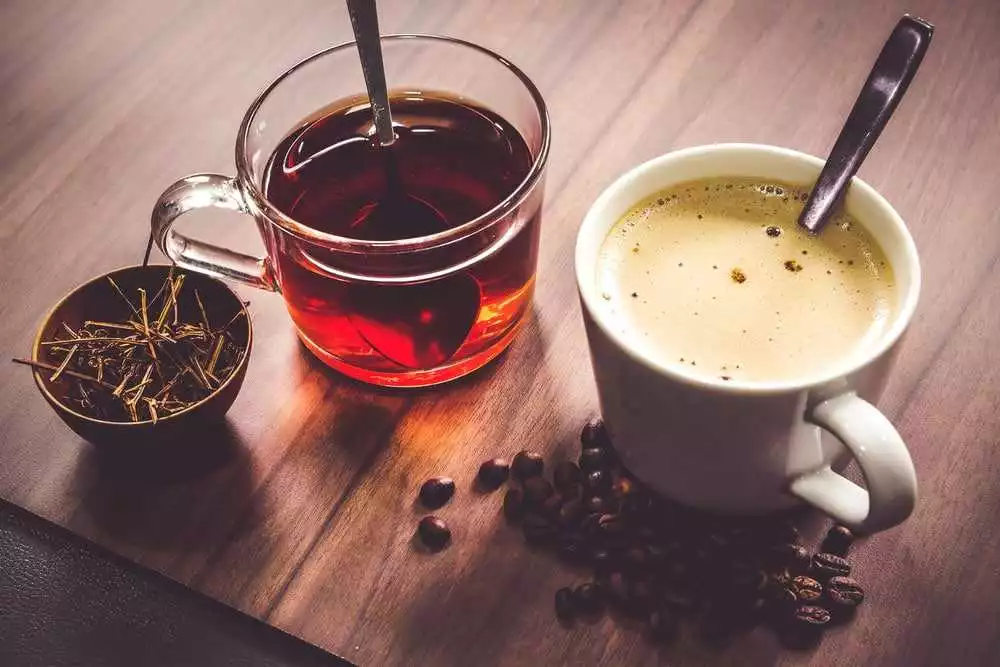
Tea is the national drink of India and China each of which has more than a billion people. it’s generally cheaper to buy and packed with more antioxidants.
Tea leaves contain 3 vital kinds of constituents that affect brew quality – caffeine, Tannins (compounds that contribute to color and strength), and Essential oil, (they provide flavour and aroma).
In Chinese, it’s sipped from tiny cups. Tibetans mix it with salt and yak butter. the Japanese whisk it during ceremonies.
Russians add lemon. Moroccans use mint. and Americans add a dash of high Fructose corn syrup.
In India, everyone has their morning tea by drinking, but if it turns time back about 100 years, then tea was not so popular at that time.
But now over 1,500 types of tea are sold over time and India is the second largest producer after China, but even then tea is the national drink of Iran and Afghanistan.
Black tea undergoes the longest process of oxidation. White tea undergoes the shortest. About 6000 thousand leaves are needed to make 1 lb of manufactured tea.
Past of Tea (इतिहास)
According to legend, tea was discovered in 2737 B.C. by Chinese Emperor Shen-Nung.
Purportedly, he discovered the beverage when tea leaves accidentally blew into his pot of boiling water.
The British started commercial tea plantations in India and in Ceylon. In 1824 tea plants were discovered in the hills along the frontier between Burma and Assam.
At first, they used seeds from China, but later seeds from the clonal Assam plant were used.
Tea was eaten as a vegetable or cooked with grain porridge. tea only shifted from food to drink 1,500 years ago when people realized that a combination of heat and moisture could create a complex and varied taste out of the leafy green.
Archaeological evidence suggests tea was first cultivated there as early as 6,000 years ago, or 1,500 years before the pharaohs built the great pyramids of Giza.
Tea arrived in Japan and Korea from China in the late 6th century and is introduced by Buddhist monks who had travelled to China to study.
The tea in India, industry has grown to own many global tea brands and has evolved into one of the most technologically equipped tea industries in the world.
The tea industry rapidly expanded, consuming vast tracts of land for tea plantations. by the turn of the century, Assam became the leading tea-producing region in the world.
Tea smuggling during able to afford and consume tea. the British government removed the tax on tea, thereby eliminating the smuggling trade, by 1785.
The popularity of tea played a role in historical events – the tea act of 1773 provoked the Boston tea party which escalated into the American Revolution.
Cultivation (खेती)
Camellia sinensis is an evergreen plant that grows mainly in tropical and subtropical climates. The leaves of the tea plant are propagated with cuttings.
A plant needs about 4 to 12 years to sow seeds and a new plant is ready about 3 years ago.
The tea plant requires about 127 cm (50 inches) rainfall every year and prefers acidic soils. many high-quality tea plants are cultivated around 1,500 meters (4,900 feet) above sea level.
Although the plant takes time to grow at this height, they are topper in taste and flavor.
There are three classifications of tea plants, with three primary classifications such as Assam tea characterized by large leaves, China tea type small leaves, and Cambodian tea type medium size leaves.
However, later genetic work showed that it is a hybrid between Chinese small-leaf tea and Assam-type tea.
A tea plant will grow into a tree of up to 16 m (if left undisturbed), but cultivation plants are generally pruned to waist height for ease of plucking.
Only 2.5 to 5 cm of leaves are selected for the next step. these leaves and buds are called flushes.
With the arrival of the monsoon, every plant grows a new flush in 7 to 15 days and the leaves that are slow in growth are sourced of better tasting tea.
Assam’s second flush or “tippy” tea is considered superior to the first flush, because of the gold tips that appear on the leaves.
Mosquito bugs can damage leaves both by sucking plant material and by the laying of the egg within the plant
Types (प्रकार)
All varieties of tea are made from the leaves of the camellia Sinensis plant.
The differences between the types of tea are primarily due to how they are processed after the leaves are picked.
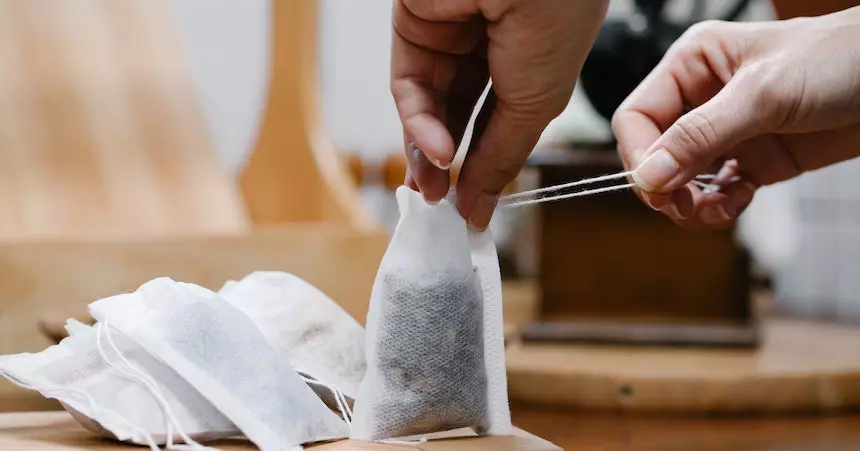
Black tea
This is one of the most popular tea flavors and is fully oxidized more than oolong, Yellow, White, and Green teas.
Black tea retains its flavor for several years and opposite this green tea usually loses its flavor within a year.
Green tea
The evidence says that green tea is known to be the healthiest beverage in the world.
It’s rich in antioxidants that have many health benefits such as:
- Improved brain system
- fat loss
- protect against cancer
- lowering the risk of type II diabetes
- reduce the chance of heart diseases
Learn – How to prevent pre-diabetes. and diabetes
Herbal Tea
Herbal teas are made from dried fruit, flowers, spices, or herbs. herbal tea has been used as a natural remedy for a variety of ailments for hundreds of years.
Herbal Teas can come in a wide range of tastes and flavours and make a tempting alternative to sugary beverages or water.
White Tea
White tea is rich in polyphenols (a type of micronutrient found in plants) called catechins.
Moreover, antioxidants help in reducing chronic inflammation by protecting the body against damage from free radicals.
Oolong Tea
It combines with the qualities of dark and green tea, this tea is a traditional Chinese tea.
Oolong tea also contains theanine, an amino acid responsible for the tea’s relaxing effect.
Several studies show that regular tea drinkers report reduced High BP and cholesterol levels. as well as reducing the risk of heart diseases.
Rooibos Tea
Rooibos tea is also known as red tea or red bush tea.
This tea is consumed in southern Africa for years, it has become a beloved drink around the world.
Its leaves grew on the western coast of South Africa.
Some claim rooibos tea is not a good source of vitamins and minerals – aside from copper and fluoride. however, it is rich in antioxidants which may give health benefits.
Yellow Tea
Yellow tea is one such tea. this tea is considered to be the rarest type of tea in the world.
It gets his name from its liquor-like colour. sweet, bright, and floral taste.
Tea provides several health benefits such as:
- Being good for skin health
- helping in weight loss
- prevents diabetes
- reduces the risk of neurogenetic diseases
- prevents some disorders related to bones
Production (उत्पादन)
World tea production has increased at an average annual growth rate of 4.7% the past decade to reach 5.89 million tonnes in 2018.
Tea production continues to increase, with robust consumption growth in origin and Muslim countries.
Tea production – 2020
| Country | Tea production |
| China | 2,400,000 |
| India | 900,000 |
| Kenya | 305,000 |
| Sri Lanka | 300,000 |
| Turkey | 175,000 |
| Indonesia | 157,000 |
| Vietnam | 117,000 |
As everyone knows that in 2020 we will face covid-19 which was quite terrible under this, how much is the production of tea in 2020?
In 2019, the global production of tea was 6.5 million tonnes, led by China with 43% and India with 22% of the world total.
Global black tea production in January rose to 39.39 million kg from 38.17 kg in January 2020.
Processing (बनाने का काम)
Different teas have different processes you were given know below. will be found in the diagram of the process.
Apart from this, there is a main part in the tea process. you will be told about them below (after the tea chart).
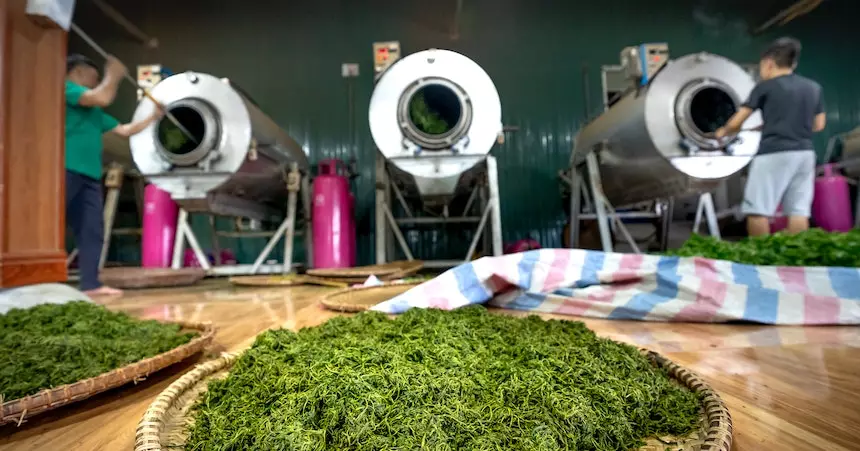
Withering Process
After the harvesting, this is the first basic method. In this process, the water content of the leaves is reduced.
There are many ways of withering from the leaves such as keeping in the sunlight, in a hot room, and in a dark place, and the withering time varies from tea to tea.
- White tea – 12-36 hours
- Green tea – 2-4 hours
- Japenese tea – 30-60 minute
- Oolong tea – 2 hours
- Black tea – 4-18 hours
- Yellow – 2-4 hours
Bruising
After the withering, the crafting method for different styles starts to diverge. Basically in this process leaves are rolled, twisted, or crushed.
The main motto of this step is to break down cell walls in the leaf and facilitate the next step of oxidation.
Some dark leaves, with high levels of oxidation, must go through multiple rounds of bruising and oxidation.
Oxidation
After a bruising, oxidation is a process through which tea leaves are exposed to the air to dry and darken, contributing to the flavour, aroma, and strength of different teas.
Oxidation begins when the cell walls within the tea leaves are damaged and tea growers intentionally grow and roll the tea leaves to initiate oxidation.
Kill Green
Kill-green or fixing process is one to stop the tea leaf oxidation to the desired level.
This kill green step is also called the fixing, but it serves to preserve whatever green color is still left in the leaf at this stage.
kill green is sometimes done by baking or panning in a rolling drum.
Drying
In the end, it is necessary to dry all the tea to remove any residual moisture and make a good leaf.
The drying of the produced tea is responsible for many new flavour compounds particularly important in green teas
After drying, the tea becomes ready for packaging and shipped all over the world.
Packaging of Tea
Packaging is done in many ways in which traders present their different teas in the market.
Tea packaging is the oldest or simplest method. seeling direct tea in packets.
Tea Bags
In 1907, Thomas Sullivan, an American tea merchant, began distributing samples of his tea in small bags of silk.
People noticed that he could just leave the tea in the bag and reuse it with fresh tea. however, this method has not been realized until later on.
During World War II, tea was given in the UK and in 1953 after given ended, Tetley launched tea bag which become very successful.
Loose Tea
The loose tea is individually measured for use, allowing for flexibility and flavor control at the expense of convenience.
Strainers, tea balls, tea presses, filtered teapots, and infusion bags prevent loose leaves from floating in the tea and over-brewing.
A traditional method uses a 3 piece-lidded teacup called a Gaiwan, the lid of which is tilted to decant the tea into a different cup for consumption.
Instant Tea
This tea is similar to freeze-dried instant coffee and an alternative to brewed tea can be consumed either hot or cold.
1930 Nestle introduced the first commercial product of 1946, while red tea debuted as instant iced tea in 1953.
Some additives such as fruit, honey, chai, and vanilla, are popular as is powdered milk.
Compressed Tea
Compressed tea was the most popular form of tea in China during the Tang dynasty.
Then prepared by loosening leaves from the cake using a small knife and steeping the extracted pieces in water.
Compressed tea produced for convenience in transport, storage, and ageing, can usually be stored longer without spoilage than loose-leaf tea.
Benefits (लाभ)
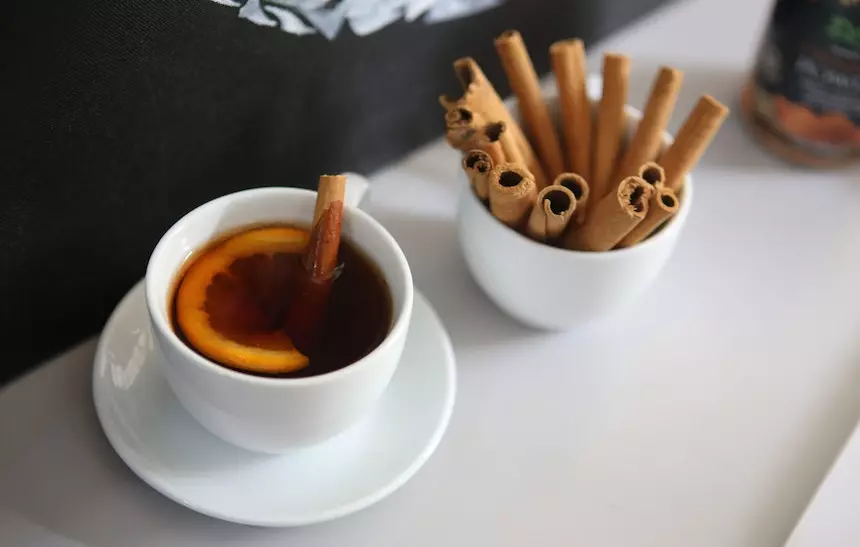
People all over the world have been drinking tea for thousands of centuries, somewhere people start their day with a cup of tea.
In India, people love tea no matter what the season, tea can be a tasty drink since it can be served hot or iced.
The study has shown that a variety of teas may boost your immunity, fight against inflammation, and even prevent diseases like cancer, and heart disease.
Green tea is loaded with flavonoids, while black tea is rich in theaflavins, due to these compounds, green tea and black tea has been allied with:
- Lower blood pressure
- reduced cholesterol level
- anticancer properties that have an effect on both animals and humans.
Some studies suggest that the proteins in milk may interface with the absorption and antioxidant activity of the compounds in tea.
Black tea contains a group of polyphenols that have antioxidant properties.
Consuming antioxidants may help decrease the risk of chronic disease and improve your overall health.
Adding black tea to your daily routine is an easy way to reduce future health issues..
Black tea has antimicrobial properties that provide immunity to intestinal bacteria by killing harmful substances and helping to repair the lining of the digestive system.
Research has shown that it may be the most effective tea in fighting various forms of cancer because its high level of antioxidants.
White tea is also good for your teeth since it contains a high source of fluoride, catechins, etc that can strengthen teeth.
Milk Tea
Properly many people like the taste of tea with milk and they have benefits such as:
- Being rich in nutrients like protein, calcium, and potassium, which are vital for optimal growth, and bone strength.
Make a cup of milk tea fit for a queen. a great variety of tea recipes actually require milk and many of these are also sweetened.
India’s ways to make spicy tea include:
- First, take a cup of water pour it into a bowl, and boil for a few minutes.
- In the second step, add tea leaves and sugar (according to your taste). and then add cups of milk.
- The third step, now you have put every ingredient in it, then boil it for a while (keep an eye).
You can also add some species for peppery (चटपटा). such as Clove, cardamom, ginger, honey, etc.

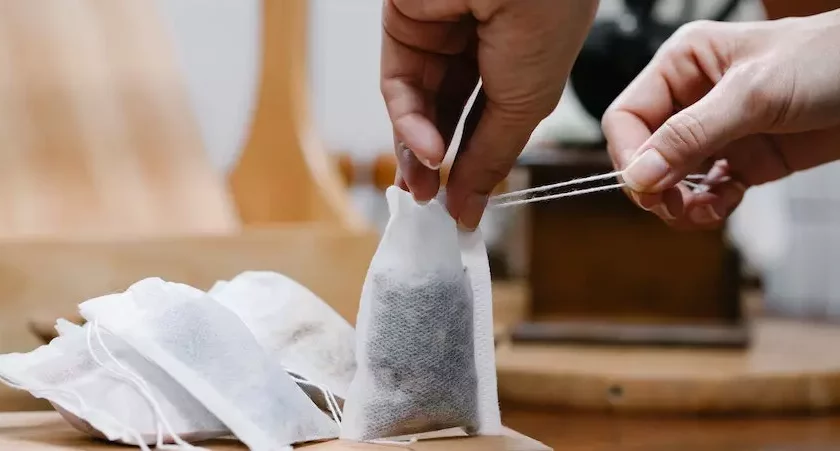

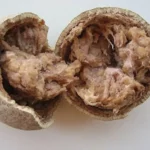
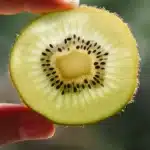
I抳e read some good stuff here. Definitely worth bookmarking for revisiting. I wonder how much effort you put to make such a excellent informative website.
Good post. I learn one thing more difficult on different blogs everyday. It should all the time be stimulating to learn content material from different writers and practice a bit something from their store. I抎 desire to make use of some with the content material on my weblog whether or not you don抰 mind. Natually I抣l provide you with a hyperlink on your net blog. Thanks for sharing.